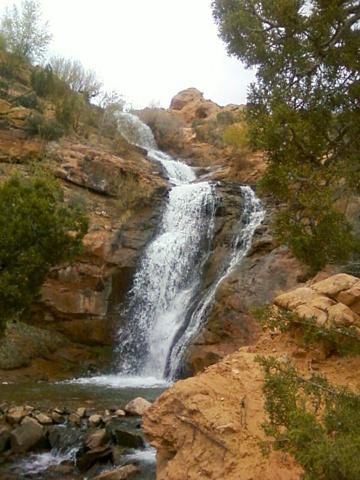Some information may be outdated.
Minimal precipitation and careless campers led to the destruction of nearly 9,000 acres in the La Sal Mountains this June, and with water sources few and far between, firefighters turned to the right fork of Mill Creek. But the solution came at a cost: the creekbed dried up, killing hundreds of fish, stranding beavers and endangering other aquatic organisms.
The Grand Water and Sewer Service Agency oversees water diversions into Ken’s Lake, a reservoir south of Moab. With the BLM’s permission, the agency began to drain Mill Creek at a rate of three cubic feet per second starting on June 10, reported BLM Canyon County District public affairs specialist Rachel Wootton, to fight the wildfire.
However, Grand Water neglected to follow standards set by the BLM to maintain water flow in the creek, draining it almost completely by the afternoon of June 12. The creek’s flow decreased to a trickle of 0.86 cubic feet, effectively draining the waterbed, and leaving its wildlife stranded.
“It took a few people noticing, the reality hitting us and then getting a hold of the right people at the Bureau of Land Management,” Sara Melnicoff, founder of Moab Solutions, told the Moab Sun News. The nonprofit is dedicated to environmental stewardship and restoration, especially in the Mill Creek area.
Mill Creek in Moab is a popular area managed by several different stakeholders: Utah School and Institutional Trust Lands Administration, the Bureau of Land Management, the City of Moab and Grand County. The waterway feeds through a diversion into Ken’s Lake, a reservoir at the base of the La Sal Mountains, which was used to fill helicopters’ water buckets for the Pack Creek Fire’s containment. As reported by the Salt Lake Tribune, millions of gallons of water were diverted into Ken’s Lake to support the firefighting effort.
“There were a lot of people involved, and there wasn’t a lot of communication,” Melnicoff said. “At the very best, this is a cautionary tale that people need to really communicate with the people who have knowledge.”
The American West as a whole has seen its worst droughts in history in recent years. Lake Mead on the Arizona-Nevada border is depleted, Bay Area residents have been asked to reduce their water use, and the federal government is likely to announce the Colorado River’s first water shortage in history this summer. Over 90% of Utah is currently categorized as in severe drought.
From the Pacific Northwest to the Four Corners to the Dakotas, the West is drying up — and wildfires come with the territory.
Mill Creek features several crevices where water sinks down and disappears, doubling the impact of draining.
“It’s a really big deal. And it’s something to really take seriously, because I think it’s a little bit of a preview into what could happen if we aren’t careful with our water,” said Melnicoff. “This part of Mill Creek went dry because of human intervention this time, but what if the whole creek went dry? It’s happened in the past. It’s just a good reminder that we have to really be respectful stewards of the earth.”
Mill Creek is rare for its constant water flow throughout the entire year, which has made its wildlife dependent on its stream. Hundreds of fish fell victim to Mill Creek’s rerouting, and Melnicoff also heard reports of dead beavers near the creek, though none have been confirmed.
“Beavers are thought to be so important in combating the worst impacts of climate change because of all the benefits of flow from their dams,” she said. Beaver ponds and dams create habitats for other freshwater creatures, slow erosion, assist in temperature control and filter water.
Though Mill Creek’s water flow has been restored for now, Melnicoff feels a sense of foreboding — as well as urgency.
“The healthier the earth is, the healthier people are in every respect — physically, mentally, emotionally,” she said. “I have three words: stop, drop and restore.”
Appreciate the coverage? Help keep local news alive.
Chip in to support the Moab Sun News.





